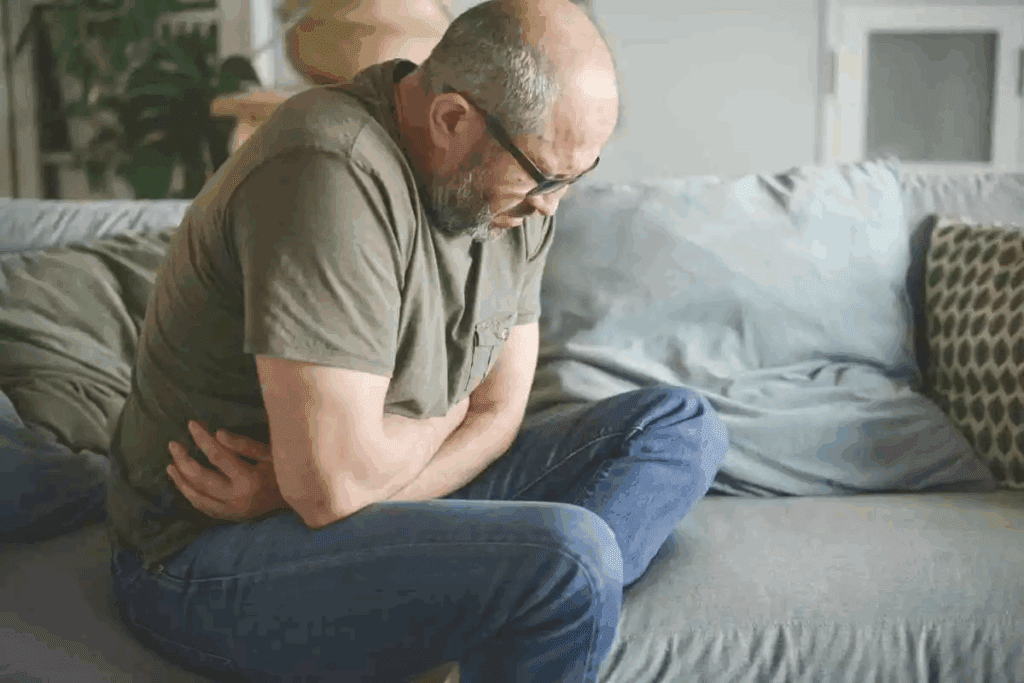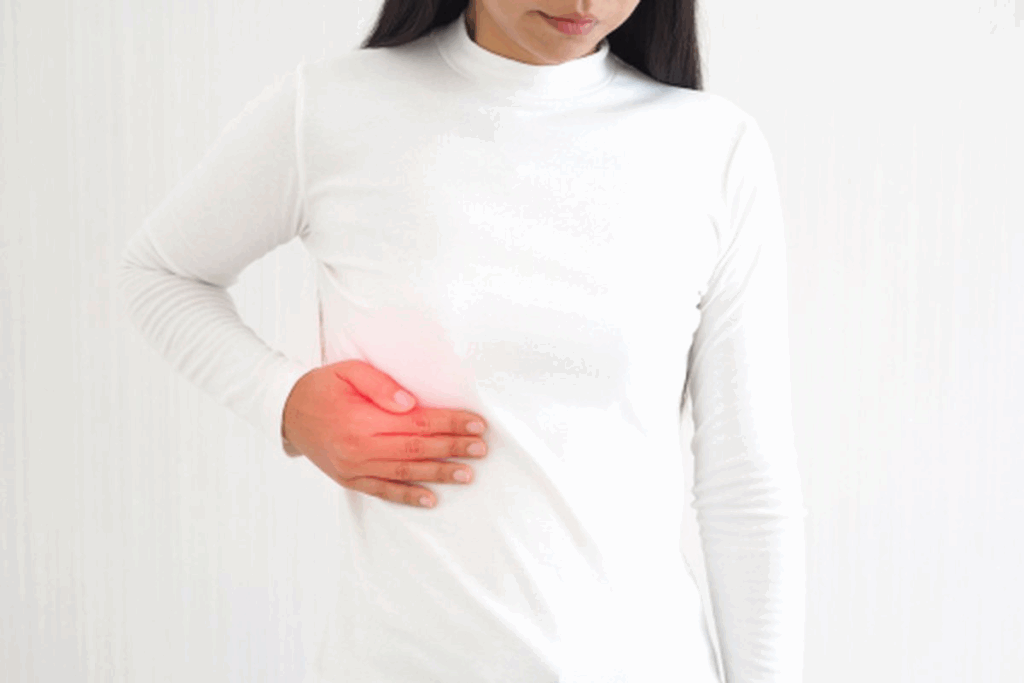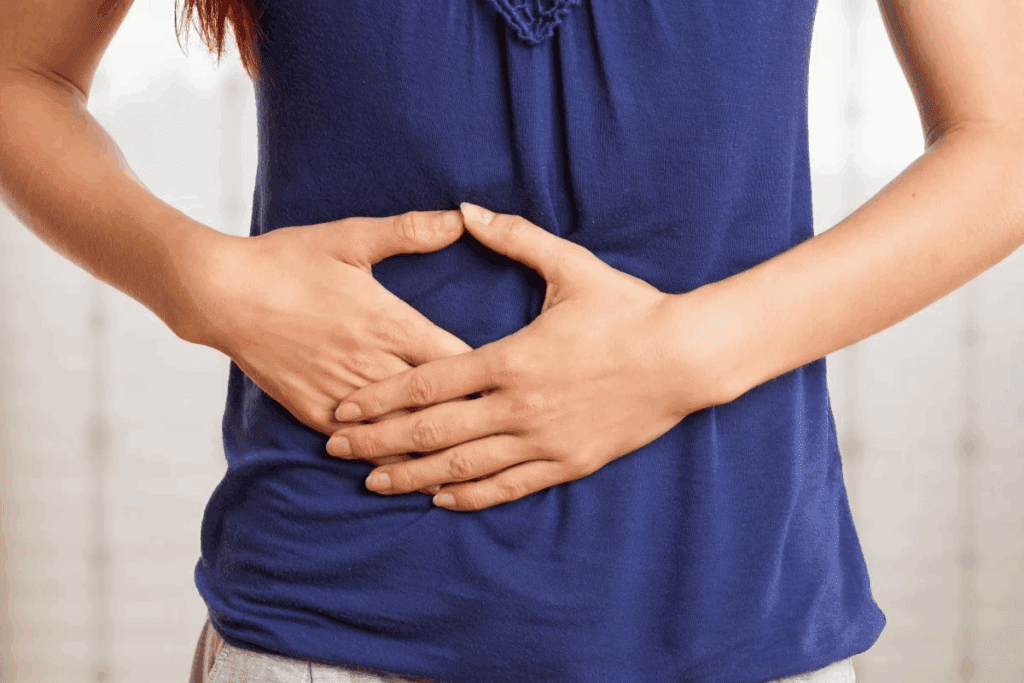Last Updated on November 26, 2025 by Bilal Hasdemir

Every year, thousands of people experience bile duct stones even after gallbladder removal. At Liv Hospital, our specialists use the latest and safest methods for bile duct stone removal, ensuring effective treatment and patient comfort. Our goal is to deliver the best outcomes while giving you peace of mind.
Bile duct stone removal requires careful diagnosis and timely expert care to prevent serious complications. This guide explains how the procedure works, what patients can expect, and how quick treatment can protect your long-term health.

Bile duct stones, also known as choledocholithiasis, are a serious health issue that needs quick medical care. These stones form in the bile ducts. The bile ducts carry bile from the liver and gallbladder to the small intestine to help with digestion.
Bile duct stones form when bile gets too full of cholesterol or when there’s an imbalance in bile components. This can cause stones to form. These stones can be cholesterol stones or pigment stones.
Cholesterol stones are yellowish and linked to too much cholesterol in bile. Pigment stones are darker and made of bilirubin and other substances. The exact reasons for their formation are complex and involve bile stasis, infection, and genetics.
The number of people with bile duct stones varies. About 10–18% of those who have their gallbladder removed have CBD stones. Risk factors include having gallstones, genetic conditions like Caroli’s disease, and bile duct obstruction or stasis.
Other risks include being older, female, or obese. Knowing these risks helps identify who needs preventive care.
Stones in the bile duct can cause symptoms like jaundice, which makes the skin and eyes yellow. Other signs include right upper abdominal pain, fever, and changes in urine and stool color.
For more information on diagnosing and treating bile duct stones, visit Mount Sinai Medical Center. They offer detailed insights into gallstones and bile duct stones.
“Early diagnosis and treatment of bile duct stones are critical to preventing complications such as cholangitis and pancreatitis.”
It’s important to recognize these symptoms early to get timely treatment and avoid serious problems. If you’re experiencing any symptoms, seek medical help right away.

Bile duct stones that are not removed can cause serious problems. If not treated, these stones can block the bile duct. This can lead to a buildup of bile in the liver and cause health issues.
Untreated bile duct stones can cause biliary colic. This is severe pain in the upper right abdomen that can spread to the back or shoulder. If not treated, this pain can become chronic and cause long-term discomfort.
Jaundice is another problem caused by bile duct obstruction. It makes the skin and eyes turn yellow because of bilirubin buildup. Jaundice can also cause dark urine, pale stools, and itching. If jaundice lasts, it may mean a serious blockage that needs quick medical help.
Untreated bile duct stones raise the risk of cholangitis, an infection of the bile duct. Cholangitis can turn into sepsis, a dangerous condition where infection spreads to the blood. Symptoms include fever, jaundice, and abdominal pain. It needs fast treatment with antibiotics and possibly draining the bile duct.
Bile duct stones can also cause pancreatitis, an inflammation of the pancreas. This can be mild or severe and even life-threatening. Symptoms include severe abdominal pain, nausea, and vomiting. Untreated pancreatitis can lead to serious complications like pancreatic necrosis or abscesses.
In conclusion, ignoring bile duct stones can lead to severe and dangerous problems. It’s important to get medical help if symptoms don’t get better or get worse. Knowing the risks can help patients make better choices about their treatment.
Diagnosing CBD stones requires several steps. These include lab tests, imaging, and endoscopic procedures. Getting the diagnosis right is key to choosing the right treatment and avoiding problems.
Lab tests are the first step for those suspected of having CBD stones. These tests include:
CA 19-9 biomarkers are also checked. But they’re mainly for cancer monitoring, not for diagnosing CBD stones.
Imaging is vital for seeing CBD stones and understanding their impact. Common methods include:
EUS is a precise way to find CBD stones, even when other methods fail. It works by:
EUS is great for spotting small stones or sludge in the CBD. It also helps plan treatments like ERCP.
In summary, diagnosing CBD stones involves lab tests, imaging, and EUS. Knowing these steps helps doctors choose the best treatment for patients with CBD stones.
Getting ready for a bile duct stone removal is important. It involves medical checks and what you eat. Dr. John Smith, a gastroenterologist, says, “Good preparation is key to a safe and easy recovery.”
A detailed medical check is needed before the procedure. It looks at your health and any risks. This includes checking your medical history, blood tests, and imaging.
Laboratory tests check for infections or inflammation. Imaging studies like ultrasound or CT scans show the stones and the area around them.
You might need to follow special dietary restrictions before the procedure. This could mean fasting or avoiding certain foods. It helps reduce the risk of problems.
“Fasting before the procedure is key to avoid food going into the lungs,” says Dr. Jane Doe, an anesthesiologist.
Some medicines might need to be changed or stopped before the procedure. This is to avoid bleeding or problems with anesthesia. Tell your doctor about all your medicines, including blood thinners and diabetes drugs.
You must give informed consent before the procedure. This means knowing the risks and benefits. Risks include bleeding, infection, and pancreatitis.
Talk to your doctor about any worries or questions. This ensures you’re ready for the procedure.
ERCP is the top choice for removing bile duct stones. It combines diagnostic and therapeutic tools for precise stone removal. This makes it a game-changer in treating this condition.
The ERCP process starts with sedation to keep the patient comfortable. A flexible endoscope is then inserted through the mouth. It goes through the stomach and into the duodenum.
A catheter is pushed through the endoscope and into the bile duct. Contrast dye is used to see the bile duct and find stones.
Stone removal uses a sphincterotome to make a small cut. This allows for the stones to be pulled out with balloons or baskets. The whole process is watched closely with fluoroscopy.
ERCP uses special tools for stone removal. These include extraction balloons, Dormia baskets, and mechanical lithotripsy devices. Extraction balloons help sweep the bile duct for stones. Dormia baskets are used for larger stones.
For big stones, mechanical lithotripsy is used. It breaks the stone into smaller pieces that can be removed.
ERCP is very effective, with a success rate over 90%. But, it comes with risks like pancreatitis, bleeding, and cholangitis. The success depends on the stone size, location, and the endoscopist’s skill.
Even with its risks, ERCP is the best option for bile duct stones. It’s minimally invasive and very effective. New technology and techniques are making ERCP even better.
Removing tough bile duct stones needs new methods and tools. Standard ERCP works for many, but some cases need more. This ensures stones are removed successfully.
Mechanical lithotripsy helps with big stones that can’t be taken out whole. It uses a device to break the stone into smaller pieces. These pieces can then be removed.
Electrohydraulic lithotripsy (EHL) breaks down hard bile duct stones. It uses an electrohydraulic probe to create shock waves that shatter the stone.
Procedure steps:
Laser lithotripsy uses laser energy to break down tough bile duct stones. It’s great for stones that don’t respond to other methods.
Advantages:
Temporary stent placement is sometimes used for tough bile duct stones. A stent is placed to keep bile flowing while waiting for a better solution or to handle problems.
Considerations for stent placement:
Using these advanced methods, doctors can better help patients with hard bile duct stones.
There are several ways to remove stones from the bile duct. Each method has its own benefits and when to use it. Surgery is chosen when other, less invasive methods don’t work or are not suitable.
Laparoscopic CBD exploration is a minimally invasive surgery. It’s used to remove stones from the bile duct. This method is preferred because it has less recovery time and less pain compared to open surgery.
The procedure involves small incisions in the abdomen. A laparoscope and other tools are used. The surgeon then goes to the bile duct to get the stones.
In some cases, laparoscopic surgery is not possible. Then, open CBD exploration is used. This traditional surgery uses a bigger incision to directly access the bile duct.
Open surgery is usually for complex cases or when laparoscopic surgery has complications.
Intraoperative cholangiography is a tool used during surgery. It helps see the bile ducts and check for stones. This ensures all stones are removed during the surgery.
It works by injecting a dye into the bile duct. Then, X-ray technology is used to image it.
Both surgical and endoscopic approaches are used for bile duct stones. The choice depends on the patient’s health, the size and location of the stones, and the available expertise.
Surgical methods are more invasive but can be better for complex cases.
Patients without a gallbladder face unique challenges when dealing with bile duct stones. The risk of these stones coming back is higher. This is because they can develop bile duct stones, which may lead to serious issues like cholangitis or pancreatitis.
After having their gallbladder removed, patients are at risk for more stones. The chance of getting common bile duct stones again can be between 5% and 20%. This depends on how well the first stones were removed and the patient’s health.
Several factors can lead to more stones forming:
Even without a gallbladder, ERCP is key in treating bile duct stones. But, the method might need to change for patients who have had their gallbladder removed.
Some new ERCP methods include:
To stop more bile duct stones from forming, a few steps can be taken. These include:
By using these methods, doctors can help patients avoid more problems and improve their health.
After a bile duct stone removal, it’s important to follow a detailed care plan. This helps manage any issues that might arise. Key factors include watching the patient closely, managing pain, and slowly introducing food back into their diet.
Right after the procedure, patients are kept under close watch in a recovery area. They are checked for any immediate problems. This includes looking at their vital signs and watching for signs of bleeding or other bad reactions.
Side effects like discomfort, nausea, and tiredness are common after this procedure. It’s important to handle these side effects well to recover smoothly. This might mean taking medication for nausea or pain, or just resting.
Managing pain is a big part of the care after the procedure. Doctors might use different types of painkillers, depending on the patient’s situation and the procedure. Sometimes, patients can control their own pain with a special pump.
Changing what you eat is a big part of getting better. At first, you might only be able to have clear liquids. Then, as you can handle it, you’ll start eating softer foods. The goal is to be gentle on your stomach while making sure you get enough nutrients.
| Day | Dietary Recommendations | Activity Level |
| 1-2 | Clear liquids | Rest |
| 3-4 | Soft foods | Gradual increase in activity |
| 5+ | Normal diet as tolerated | Return to normal activities |
By sticking to these guidelines, patients can lower their risk of problems and have a good recovery after bile duct stone removal.
To stop bile duct stones from coming back, we need to change our diet, take medicine, and make lifestyle changes. Understanding how stones form and the treatments is key. Then, we can focus on preventing them in the long run.
Eating right is important to stop bile duct stones from coming back. Increasing fiber intake helps a lot. Eat more fruits, veggies, and whole grains. Also, reducing dietary fat helps manage bile and lowers the risk of stones.
Here’s a table with some dietary tips:
| Dietary Component | Recommended Change |
| Fiber Intake | Increase consumption of fruits, vegetables, and whole grains |
| Dietary Fat | Reduce intake of fatty foods to manage bile production |
| Fluid Intake | Stay hydrated to help prevent stone formation |
Some medicines can help stop bile duct stones from coming back. Ursodeoxycholic acid (UDCA) is often used. It helps by improving bile flow and stopping cholesterol crystals from forming.
It’s important to check up regularly to catch any problems early. This means periodic imaging studies like ultrasound or CT scans. Also, lab tests to check liver and bile duct health.
Our lifestyle choices can also affect stone formation. Staying at a healthy weight and being active helps. Also, avoid rapid weight loss to lower stone risk.
The way we manage bile duct stones has changed a lot. This has made treatments better and safer for patients. Now, we use Endoscopic Retrograde Cholangiopancreatography (ERCP) and lithotripsy. These methods make treatments less invasive and more effective.
Thanks to new technology, doctors can spot liver duct stones more easily. This helps them treat these stones better. It also lowers the chance of serious problems like biliary colic, jaundice, and pancreatitis.
Even though some gallbladder stones might go away on their own, others need help. Knowing when to intervene is key. The progress in treating bile duct stones has made it easier to handle these problems.
As technology keeps getting better, we can expect even more improvements in treating bile duct stones. This means patients will have safer and more effective options for dealing with stones in their belly and liver ducts.
Yes, some gallstones can pass on their own. But, not all do, and you might need medical help to avoid problems.
Bile duct stones are hard deposits in the bile ducts. They often start in the gallbladder. They can block the duct and cause serious issues.
No, gallbladder stones need a gallbladder to form. But, bile duct stones can happen even after the gallbladder is removed.
The bile duct carries bile from the liver and gallbladder to the small intestine. It’s key for digestion.
Doctors use tests like ultrasounds and CT scans to find bile duct stones. They also use endoscopic ultrasound to see inside the ducts.
ERCP is a procedure that lets doctors see and remove bile duct stones. They use special tools for this.
Yes, bile duct stones can come back. This is more likely if you don’t manage risk factors. Regular check-ups and prevention can help.
Untreated stones can cause biliary colic, jaundice, cholangitis, and pancreatitis. These are serious problems.
To prevent stones, eat right, stay at a healthy weight, and manage health conditions that can lead to stones.
CBD stones are linked to gallbladder disease. They might need special treatment.
Some gallstones might pass on their own. But, there are risks like blockage and complications.
For tough stones, doctors use mechanical lithotripsy, electrohydraulic lithotripsy, laser lithotripsy, and stent placement.
Doctors will help with pain after removal. This might include medicine and other treatments.
Yes, your lifestyle affects your risk of bile duct stones. Diet, exercise, and weight are important.
Subscribe to our e-newsletter to stay informed about the latest innovations in the world of health and exclusive offers!